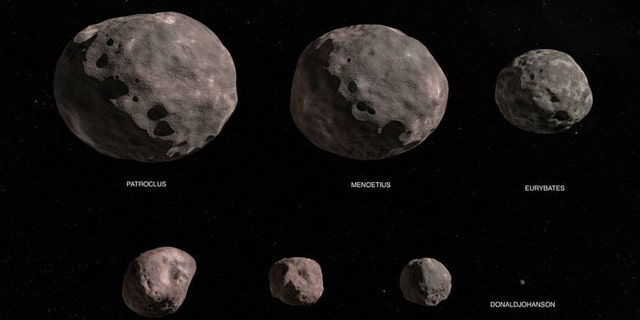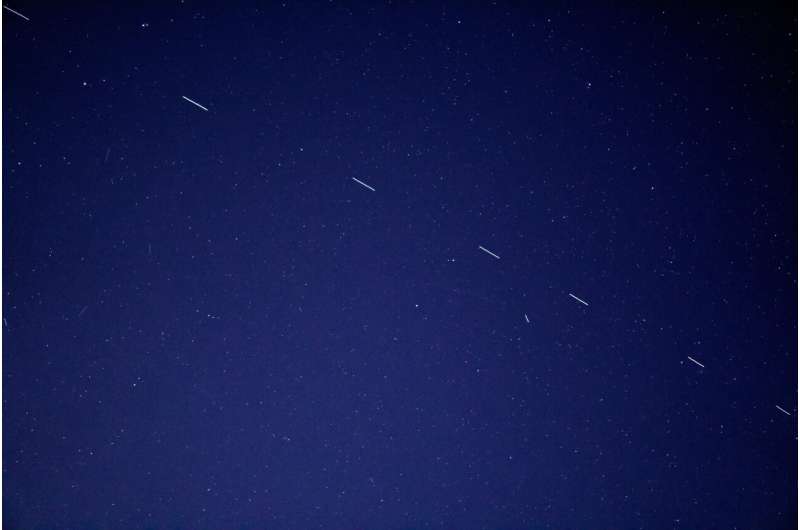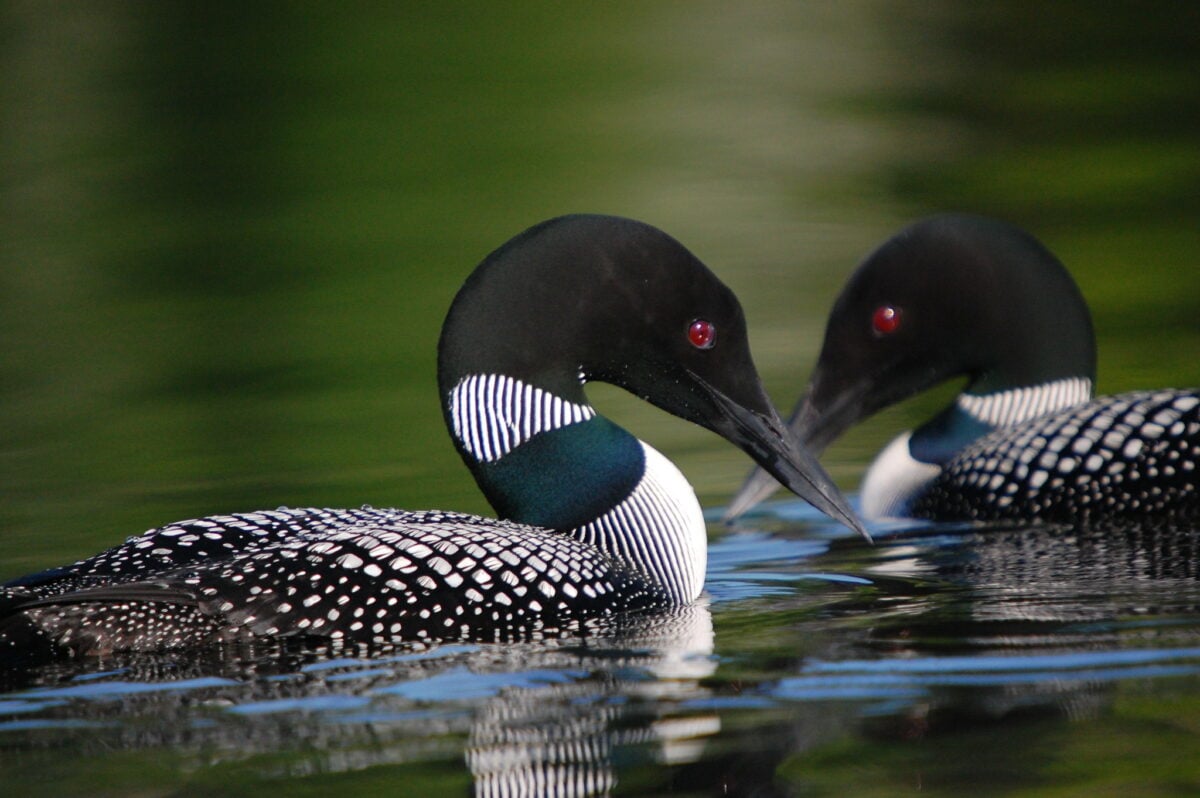Science
NASA’s Lucy launches to Trojan Asteroids – News Nation USA

NASA’s Lucy mission launched early Saturday from the agency’s Kennedy Space Center at Cape Canaveral, Fla.
The first-ever mission to the Trojan Asteroids, Lucy will travel some 4 billion miles and lifted off aboard the United Launch Alliance (ULA) Atlas V rocket.
NASA PLAN FOR WI-FI ON THE MOON TESTED TO SPAN CLEVELAND’S DIGITAL DIVIDE
Lucy’s prime mission is nearly 12 years long, during which it will visit eight asteroids – a Main Belt asteroid and seven Trojans – that have been sharing an orbit with Jupiter at the planet’s Lagrange points as it goes around the sun for billions of years.
Lagrange points are places around a planet’s orbit where the gravitational pull of the planet and the sun and the motion of the orbit combine to create an equilibrium.
The asteroids are thought to be remnants of the primordial material that formed the outer planets and scientists say that studying them will give them important clues about the formation of the Solar System.
The Lucy spacecraft sits atop a United Launch Alliance Atlas V rocket ready for launch at Launch Complex 41 at the Cape Canaveral Space Force Station, Friday, Oct. 15, 2021, in Cape Canaveral, Fla. Lucy, scheduled to launch Saturday at 5:34am will observe Trojan asteroids, a unique family of asteroids that orbit the sun in front of and behind Jupiter.
(AP Photo/John Raoux)
No other space mission in history has been launched to as many different destinations in independent orbits around the sun, NASA notes.
Lucy – traveling at an average cruising speed of 39,000 mph and 15,000 mph as it flies by each asteroid – will also be the first spacecraft to journey a bit farther than the distance of Jupiter and return to the vicinity of the Earth for a final gravity assist that will send it back out to its final Trojan encounters.
Scientists selected several targets to study and will use several instruments to gather visual, compositional and physical information.
Lucy, which measures more than 51 feet wide with two giant solar panels needed to power the spacecraft, has a High Gain Antenna needed to communicate with Earth that is located on the spacecraft’s body.
NASA’s Lucy mission will explore a record-breaking number of asteroids, flying by one asteroid in the solar system’s main asteroid belt, and by seven Trojan asteroids.This illustration is of the Lucy mission’s seven targets: the binary asteroid Patroclus/Menoetius, Eurybates, Orus, Leucus, Polymele, and the main belt asteroid DonaldJohanson.
(Image Credit: NASA/Goddard Space Flight Center Conceptual Image Lab)
Also on its body, the Lucy Thermal Emission Spectrometer (L’TES) will measure the asteroids’ surface temperature by observing the thermal infrared spectrum, the Lucy Long Range Reconnaissance Imager (L’LORRI) high-resolution, panchromatic visible camera will provide detailed surface images and L’Ralph has an infrared imaging spectrometer that will reveal absorption lines that service as fingerprints for different silicates, ices and organics in addition to the L’Ralph Multi-spectral Visible Imaging Camera (MVIC) that will take color images of the Trojans to help determine their composition.
EXISTENCE OF MARS LAKE, FLOODS CONFIRMED BY NASA’S PERSEVERANCE TEAM
Lucy will also be able to use its terminal tracking cameras (T2CAM) to track the asteroids as it passes within 600 miles of each target.
In addition to the spectrographs and robotic cameras, Lucy uses Doppler tracing to measure mass.
Plus, Lucy will operate farther from the sun than any previous solar-powered spacecraft.
At 7:09 a.m. EDT, NASA tweeted that the $981 Lucy mission had “successfully deployed its solar panels, and now its epic journey to Jupiter’s Trojan asteroids is officially underway.”
Although Lucy carries a large artificial diamond that will split light beams in its far-infrared spectrometer instrument, the mission is not named for The Beatles’ famous “Lucy in the Sky With Diamonds.”
Instead, Lucy was chosen in honor of the fossilized human ancestor that was found in Ethiopia in 1974 and given the same name.
“To be out here this morning is absolutely mind-expanding… to see what the creativity of the human mind can do,” paleoanthropologist Donald Johanson, who found the fossil, told NASA in an interview from the Lucy launch site.
CLICK HERE TO GET THE FOX NEWS APP
At the end of the mission, Lucy will continue on a stable orbit, traveling from near the Earth’s orbit and then heading out into the Trojan swarms.
“The team has carefully planned so that Lucy will not hit the Earth or contaminate any place that might have life for well over 100,000 years,” NASA wrote on its website. “If no future humans collect Lucy as a historical artifact of the early days of Solar System exploration, then Lucy’s orbit will eventually become unstable, and Jupiter will most likely send the spaceship into the sun or fling it out of the Solar System.”
The Associated Press contributed to this report.
Science
SpaceX launch marks 300th successful booster landing – Phys.org


SpaceX sent up the 30th launch from the Space Coast for the year on the evening of April 23, a mission that also featured the company’s 300th successful booster recovery.
A Falcon 9 rocket carrying 23 of SpaceX’s Starlink internet satellites blasted off at 6:17 p.m. Eastern time from Cape Canaveral Space Force Station’s Space Launch Complex 40.
The first-stage booster set a milestone of the 300th time a Falcon 9 or Falcon Heavy booster made a successful recovery landing, and the 270th time SpaceX has reflown a booster.
This particular booster made its ninth trip to space, a resume that includes one human spaceflight, Crew-6. It made its latest recovery landing downrange on the droneship Just Read the Instructions in the Atlantic Ocean.
The company’s first successful booster recovery came in December 2015, and it has not had a failed booster landing since February 2021.
The current record holder for flights flew 11 days ago making its 20th trip off the launch pad.
SpaceX has been responsible for all but two of the launches this year from either Kennedy Space Center or Cape Canaveral with United Launch Alliance having launched the other two.
SpaceX could knock out more launches before the end of the month, putting the Space Coast on pace to hit more than 90 by the end of the year, but the rate of launches by SpaceX is also set to pick up for the remainder of the year with some turnaround times at the Cape’s SLC-40 coming in less than three days.
That could amp up frequency so the Space Coast could surpass 100 launches before the end of the year, with the majority coming from SpaceX. It hosted 72 launches in 2023.
More launches from ULA are on tap as well, though, including the May 6 launch atop an Atlas V rocket of the Boeing CST-100 Starliner with a pair of NASA astronauts to the International Space Station.
ULA is also preparing for the second launch ever of its new Vulcan Centaur rocket, which recently received its second Blue Origin BE-4 engine and is just waiting on the payload, Sierra Space’s Dream Chaser spacecraft, to make its way to the Space Coast.
Blue Origin has its own rocket it wants to launch this year as well, with New Glenn making its debut as early as September, according to SLD 45’s range manifest.
2024 Orlando Sentinel. Distributed by Tribune Content Agency, LLC.
Citation:
SpaceX launch marks 300th successful booster landing (2024, April 24)
retrieved 24 April 2024
from https://phys.org/news/2024-04-spacex-300th-successful-booster.html
This document is subject to copyright. Apart from any fair dealing for the purpose of private study or research, no
part may be reproduced without the written permission. The content is provided for information purposes only.
Science
Wildlife Wednesday: loons are suffering as water clarity diminishes – Canadian Geographic


The common loon, that icon of northern wilderness, is under threat from climate change due to declining water clarity. Published earlier this month in the journal Ecology, a study conducted by biologists from Chapman University and Rensselaer Polytechnic Institute in the U.S. has demonstrated the first clear evidence of an effect of climate change on this species whose distinct call is so tied to the soundscape of Canada’s lakes and wetlands.
Through the course of their research, the scientists found that July rainfall results in reduced July water clarify in loon territories in Northern Wisconsin. In turn, this makes it difficult for adult loons to find and capture their prey — mainly small fish — underwater, meaning they are unable to meet their chicks’ metabolic needs. Undernourished, the chicks face higher mortality rates. The consistent foraging techniques used by loons across their range means this impact is likely echoed wherever they are found — from Alaska to Canada to Iceland.
The researchers used Landsat imagery to find that there has been a 25-year consistent decline in water clarity, and during this period, body weights of adult loon and chicks alike have also declined. With July being the month of most rapid growth in young loons, the study also pinpointed water clarity in July as being the greatest predictor of loon body weight.
One explanation for why heavier rainfall leads to reduced water clarity is the rain might carry dissolved organic matter into lakes from adjacent streams and shoreline areas. Lawn fertilizers, pet waste and septic system leaks may also be to blame.
The researchers, led by Chapman University professor Walter Piper, hope to use these insights to further conservation efforts for this bird Piper describes as both “so beloved and so poorly understood.”
Return of the king
Science
Giant prehistoric salmon had tusk-like teeth for defence, building nests


|
|
The artwork and publicity materials showcasing a giant salmon that lived five million years ago were ready to go to promote a new exhibit, when the discovery of two fossilized skulls immediately changed what researchers knew about the fish.
Initial fossil discoveries of the 2.7-metre-long salmon in Oregon in the 1970s were incomplete and had led researchers to mistakenly suggest the fish had fang-like teeth.
It was dubbed the “sabre-toothed salmon” and became a kind of mascot for the Museum of Natural and Cultural History at the University of Oregon, says researcher Edward Davis.
But then came discovery of two skulls in 2014.
Davis, a member of the team that found the skulls, says it wasn’t until they got back to the lab that he realized the significance of the discovery that has led to the renaming of the fish in a new, peer-reviewed study.
“There were these two skulls staring at me with sideways teeth,” says Davis, an associate professor in the department of earth sciences at the university.
In that position, the tusk-like teeth could not have been used for biting, he says.
“That was definitely a surprising moment,” says Davis, who serves as director of the Condon Fossil Collection at the university’s Museum of Natural and Cultural History.
“I realized that all of the artwork and all of the publicity materials and bumper stickers and buttons and T-shirts we had just made two months prior, for the new exhibit, were all out of date,” he says with a laugh.
Davis is co-author of the new study in the journal PLOS One, which renames the giant fish the “spike-toothed salmon.”
It says the salmon used the tusk-like spikes for building nests to spawn, and as defence mechanisms against predators and other salmon.
The salmon lived about five million years ago at a time when Earth was transitioning from warmer to relatively cooler conditions, Davis says.
It’s hard to know exactly why the relatives of today’s sockeye went extinct, but Davis says the cooler conditions would have affected the productivity of the Pacific Ocean and the amount of rain feeding rivers that served as their spawning areas.
Another co-author, Brian Sidlauskas, says a fish the size of the spike-toothed salmon must have been targeted by predators such as killer whales or sharks.
“I like to think … it’s almost like a sledgehammer, these salmon swinging their head back and forth in order to fend off things that might want to feast on them,” he says.
Sidlauskas says analysis by the lead author of the paper, Kerin Claeson, found both male and female salmon had the “multi-functional” spike-tooth feature.
“That’s part of our reason for hypothesizing that this tooth is multi-functional … It could easily be for digging out nests,” he says.
“Think about how big the (nest) would have to be for an animal of this size, and then carving it out in what’s probably pretty shallow water; and so having an extra digging tool attached to your head could be really useful.”
Sidlauskas says the giant salmon help researchers understand the boundaries of what’s possible with the evolution of salmon, but they also capture the human imagination and a sense of wonder about what’s possible on Earth.
“I think it helps us value a little more what we do still have, or I hope that it does. That animal is no longer with us, but it is a product of the same biosphere that sustains us.”
This report by The Canadian Press was first published April 24, 2024.
Brenna Owen, The Canadian Press





-
Art23 hours ago
The unmissable events taking place during London’s Digital Art Week
-



 Politics18 hours ago
Politics18 hours agoOpinion: Fear the politicization of pensions, no matter the politician
-
Economy23 hours ago
German Business Outlook Hits One-Year High as Economy Heals
-



 Science17 hours ago
Science17 hours agoNASA Celebrates As 1977’s Voyager 1 Phones Home At Last
-
Media16 hours ago
B.C. puts online harms bill on hold after agreement with social media companies
-



 Politics17 hours ago
Politics17 hours agoPecker’s Trump Trial Testimony Is a Lesson in Power Politics
-
Business16 hours ago
Oil Firms Doubtful Trans Mountain Pipeline Will Start Full Service by May 1st
-
News18 hours ago
Provincial audit turns up more than 40 medical clinics advertising membership fees



